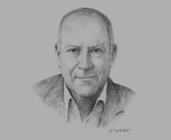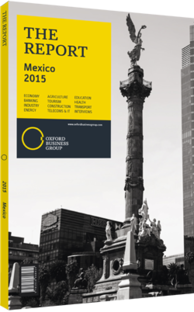Norman Foster, Chairman and Founder, Foster + Partners: Interview

Interview: Norman Foster
How significant is a new airport as a marker of a country’s economic growth?
NORMAN FOSTER: There is a clear link between aviation capacity and economic growth. Yet for every successful airport project others have been less successful, whether because of poor planning, timing or failure to respond to change – such as Montréal-Mirabel, now used only for cargo just 29 years after it opened, or Berlin’s Brandenburg airport, which has been plagued with technical difficulties and delays. For such projects to be successful, there needs to be a meeting between political will and effective planning. Mexico City is comparable to some of our previous airport projects for its reinvention of the terminal diagram. The new Mexico City international airport’s continuous gridshell can be seen as the next step in creating the airport of the future.
Can the airport enable Mexico City to become a key transport hub for the region?
FOSTER: One of the most impressive aspects of the project is that the airport is just one part of a much larger national infrastructure programme. The terminal’s structure is designed for flexibility and anticipates an increase in passenger numbers to 2028 and beyond. The three-runway site has an expansion plan up to 2062, with six runways eventually envisaged for the site. This flexibility can certainly allow it to become a regional hub for the Americas and elsewhere.
How does the design relate to Mexico’s identity?
FOSTER: Airports are international gateways, which ideally express a sense of place. An important aspect of the design is that it is conceived to be made in Mexico, by local craftsmen and engineers. It will be a showcase for national innovation. The design is a celebration of space and light, and the airport will be one of the world’s largest and most sustainable airports. The continuous gridshell dissolves the traditional separation of roof and walls, which is radical when compared with a typical terminal of columns and beams. As well as responding to the local climate and site conditions, it will create an airport unlike any other. Mexican architecture, whether Aztec, Mayan or modern, has always celebrated monumental vision. There will be a sense of drama in the vast 170-metre span, which will soar above passengers, curving down and wrapping around the departure gates in a fluid motion evocative of flight itself.
What challenges do the land and subsoil present?
FOSTER: The soil conditions are challenging because the site is located in an area that used to be a shallow lake. As a result, the soil has high water content with little capacity to support large loads. In addition, the area is seismic, and the soil type increases the effects of ground movement. The structural design responds to these challenges in two ways. Firstly, the airport has been designed to minimise the need for underground works. The terminal is designed as a single compact structure, avoiding an underground train in the first phase. Wherever possible, services are kept above ground. Secondly, the superstructure is designed for lightness and flexibility. The roof is a series of interlocking shell structures that resist their loads through inplane forces, rather than bending.
What technologies are being used to prevent against the possible effects of seismic activity?
FOSTER: The airport location is different from many other earthquake zones because of the soil conditions. The ground is soft, which has the effect of magnifying and prolonging the ground shaking at the airport site. The foundations are designed to take account of the substantial settlements and differential movements that will occur in the future – a raft base slab will be constructed to spread the loads and movements across the structure. The roof is lightweight and flexible, so that movements due to seismic activity can be absorbed through the shell geometry. In addition, the roof has been isolated from the superstructure so that the two structures can behave independently of each other.
You have reached the limit of premium articles you can view for free.
Choose from the options below to purchase print or digital editions of our Reports. You can also purchase a website subscription giving you unlimited access to all of our Reports online for 12 months.
If you have already purchased this Report or have a website subscription, please login to continue.

